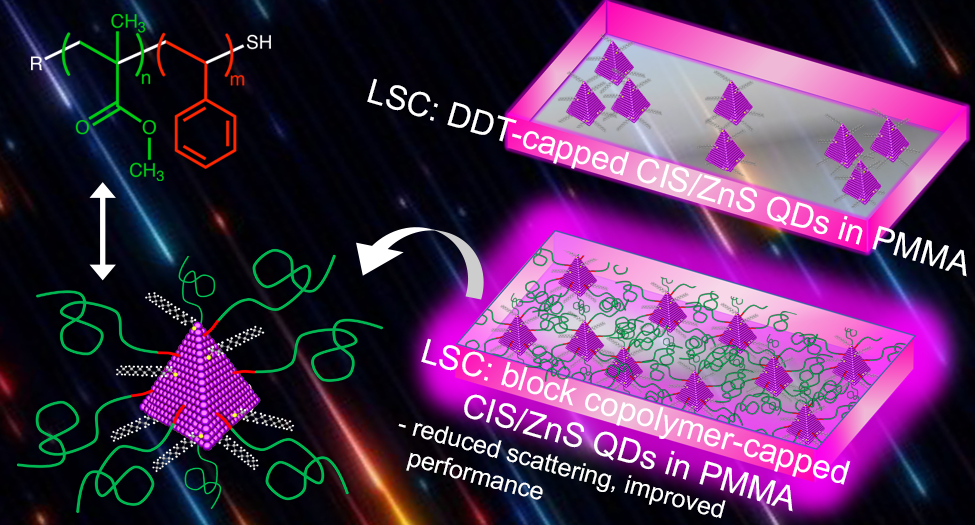Research Proj 3- Polymer-Quantum Dot Composites

Luminescent solar concentrators (LSCs) use down-converting phosphors embedded in a transparent waveguide to absorb sunlight, trap luminescent photons by total internal reflection, and deliver high irradiance, narrowband output light for driving photovoltaic, photochemical, and other solar energy converters. Quantum dot based (QD) LSCs are typically affected by several optical loss mechanisms including the loss of a fraction of guided light during transport to the concentrator edges through scattering from QD aggregates. Although the recent introduction of large effective Stokes shift QD luminophores for LSC applications has helped address several shortcomings associated with previous generations of organic and inorganic dyes, including improved solar spectrum matching, photostability, and photoluminescence quantum yield, achieving low light scattering at technologically-relevant QD loadings in commercially-deployed polymers such as poly(methyl methacrylate) (PMMA) remains challenging. In this project, the concept of applying QDs bearing polymer-ligands matching the composition of the LSC matrix to reduce aggregation and the resulting parasitic waveguide losses caused by scattering is validated. QDs bearing PMMA-ligands are prepared then applied as down-converting phosphors embedded in a PMMA waveguide. The resulting QD-based LSCs were found to have lower optical scattering with higher loading as a result of reduced aggregation in the devices.
See our paper in: ACS Applied Polymer Materials

